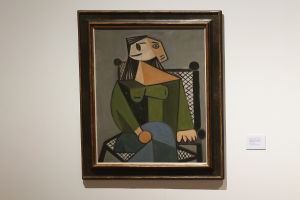When you gaze upon Leonardo da Vinci's Mona Lisa, it's hard to escape the allure of her enigmatic smile, the delicate play of light and shadow, and the intricate landscape behind her.
But one peculiar detail often goes unnoticed: the absence of eyebrows. It's a question that has puzzled art lovers, historians, and critics for centuries—why doesn't the Mona Lisa have eyebrows or eyelashes?
Was it an intentional design choice, or simply a case of the painting's age and wear? Let's dive into the deeper meaning of this seemingly odd detail and explore how it reflects the beauty standards and aesthetic values of the Renaissance.
Eyebrow Trends in the Renaissance
To understand why the Mona Lisa is eyebrow-less, we first need to look at the beauty standards of the time. During the Renaissance, there was a strong emphasis on idealized beauty that blended the human form with mathematical proportions. This led to a more restrained approach to feminine features, especially regarding the eyebrows.
In Renaissance Italy, many women plucked or shaved their eyebrows and sometimes even their hairlines to achieve a more "elevated" or noble look. The absence of eyebrows and a higher forehead were seen as signs of refinement and beauty. It was believed that a smooth, unbroken face was more harmonious and elegant. These ideals can be seen in other works from the period, such as the portraits of noble women, where eyebrows were either subtly rendered or completely absent.
Da Vinci's Personal Style and Artistic Intentions
Leonardo da Vinci was not only a master painter, but also an observer of human anatomy, an inventor, and a scientist. His approach to painting was deeply influenced by his scientific observations of the human body. It's possible that da Vinci intentionally left the Mona Lisa's eyebrows out as part of his exploration of the human form.
Da Vinci was known for his detailed studies of anatomy, and he often depicted the body with an emphasis on naturalism. By leaving the eyebrows out, he might have been focusing more on the play of light and shadow on the face rather than adhering to conventional beauty standards.
The absence of eyebrows could have been a technique to create a softer, more subtle face expression, enhancing the ambiguity and mystery of the portrait. It was not uncommon for Renaissance artists to leave out details like eyebrows or eyelashes in their works, as these features were often seen as distractions from the more important aspects of the portrait: the face expression, the clothing, and the posture.
Time and Wear: The Effects of Aging
Another theory suggests that the missing eyebrows might not have been an intentional choice by da Vinci but rather the result of the painting's age. The Mona Lisa has undergone centuries of wear and tear, and some experts believe that the eyebrows were once there but have faded over time due to the painting's exposure to environmental factors, such as sunlight and dust.
During the Mona Lisa's restoration in the late 20th century, it was noted that the pigments used in Leonardo's work may have been less stable than expected. The fine lines that likely represented the eyebrows might have been among the first details to fade. This would have occurred naturally over hundreds of years, but it's still unclear whether da Vinci ever intended to paint the eyebrows in the first place.
The Symbolism of the Missing Eyebrows
While there may be practical explanations for why the Mona Lisa lacks eyebrows, there's also a symbolic layer to consider. The absence of eyebrows could be interpreted as adding to the subject's mystique. Without them, Mona Lisa's face becomes more ethereal, almost otherworldly. The ambiguous expression on her face—neither happy nor sad—becomes more captivating when we focus on the subtle details of her appearance, like the smoothness of her skin or the delicate curve of her lips.
In Renaissance art, everything was symbolic. It's possible that Leonardo, known for his meticulous approach to art, consciously omitted the eyebrows to direct the viewer's attention to more important features, like the gaze or the lips, or to make the subject appear more timeless. Removing the eyebrows, in a way, universalized her image, making it less tied to any one time or place and more open to interpretation.
Why It Matters: The Enduring Appeal of the Mona Lisa
The absence of eyebrows is only one aspect of the Mona Lisa that contributes to its global fame. What makes this portrait so compelling is not just its aesthetic or technical execution but the mystery that surrounds it. The missing eyebrows add to the sense of ambiguity, creating a sense of intrigue that has fascinated audiences for centuries.
The Mona Lisa's ability to provoke curiosity and speculation speaks to the power of art to transcend time and place. Whether through the omission of eyebrows, the soft smile, or the use of sfumato (the technique of blending colors and tones), da Vinci's painting continues to captivate the world, sparking conversations and theories. It's a perfect example of how a single detail—whether intentional or not—can become a symbol of something much larger than itself, drawing people to the painting and allowing them to find new meanings, even centuries after its creation.
A Masterpiece with Many Layers
So, why doesn't the Mona Lisa have eyebrows? The answer isn't entirely clear. It could be a reflection of Renaissance beauty standards, an intentional choice by da Vinci to enhance the painting's naturalistic qualities, or a result of the painting's deterioration over time.
Regardless of the reason, the missing eyebrows are just one piece of the puzzle that makes the Mona Lisa so captivating. They contribute to the mystery, the allure, and the timeless appeal of one of the most famous artworks in history. In the end, it's the combination of technique, symbolism, and subtlety that makes the Mona Lisa a masterpiece worth contemplating for generations to come.


